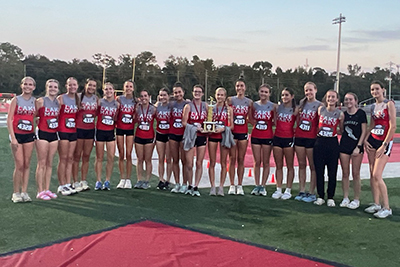Training Paces: Mixing it Up
By Susan S. Paul, MS; TSF Training Program Director
At this time of year, many Central Florida runners are in the midst of training for half and full marathons. Distance races require a unique blend of speed, strength, and endurance. This unique combination of running components can make it difficult for some to figure out how best to train for these races. Should runners focus on long runs or speed? Using a variety of training paces that address each of these individual running components has much to offer, so consider mixing it up.
Training paces depend upon the intention and the distance of the workout. Yes, you can “just go out and run” but incorporating distinct run paces that address speed, strength, and endurance help prepare runners for the specific demands of a distance race. Distance training requires logging quite a few miles each week too, so by varying your training paces and mileage with each workout, you improve the quality of your training while also reducing the risk of injury or mental burnout.
My suggestions for how you can incorporate different training paces into your training routine are listed below. These pace ranges will offer you variety, as well as, improve your fitness level and boost your performance.
SPEED If you are doing intervals on a track (intervals of less than 1 mile; i.e. 1200’s or less), use 60 seconds per mile faster than your goal marathon or half-marathon pace. For longer intervals, like Mile Repeats, use a time of 30 seconds per mile faster than your goal marathon or half-marathon pace. Distance: Use this pace range of 30-60 seconds per mile faster than goal race pace for runs of 6 miles or less.
STRENGTH Tempo or hill runs are also referred to as strength runs. For these types of runs, use a range of 30 seconds per mile faster than your goal marathon race pace to right AT your goal race pace. Distance: Use this pace range for runs of 10 miles or less.
ENDURANCE Endurance is gained through long runs as you increase distance in graduated increments. The recommended pace for long runs is typically slower than your goal race pace, especially for runs over 14 miles. The general adage is, the longer the run, the slower the pace. For long runs, use a range of 30 to 60 seconds per mile slower than goal race pace. Distance: For runs of 11 to 14 miles, try 30 seconds slower than goal race pace. For runs over 14 miles, use 45-60 seconds slower than goal pace.
Keep in mind that these recommended training paces are for “ideal” weather conditions. Heat and humidity are not factored in, so prepare to slow down if you are training in hot, humid conditions. As always, listen to your body while training and adjust training paces accordingly. If a run pace feels too hard, it is, so slow it down. On the other hand, if a training pace feels too easy, pick up the pace by a few seconds and see how that feels. Take note of your recovery time afterwards; if your post-run recovery is slow and you are not ready for the next run on your training plan, the training pace was most likely too fast. Paying attention to the messages your body sends you is one of the best lessons running teaches us, so listen and learn.







